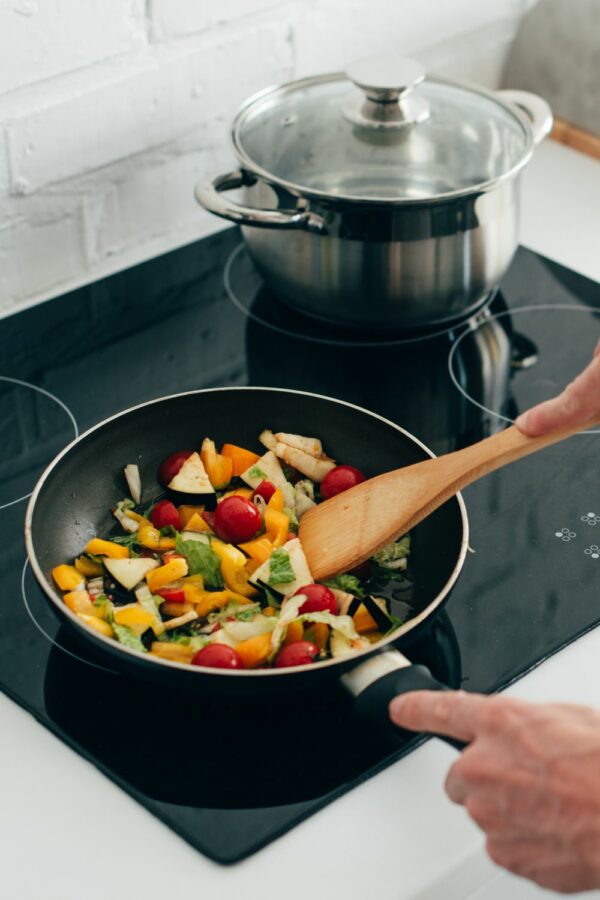If “eco-friendly” implies biodegradable or compostable, then most bioplastics intended to replace fossil fuel-derived plastics are not eco-friendly.
How can this be?
Bioplastics have been hailed as the solution to the ocean plastic pollution crisis because they are (supposed to be) biodegradable and compostable.
Unfortunately, most bioplastics are actually neither… at least as “biodegradable” and “compostable” are typically understood.
These terms are tossed around too casually these days, leaving folks confused and possibly feeling deceived by supposedly “green” companies making biodegradability or compostability claims. We’d like to change that through much-needed clarification.
In this article, complementary to our piece on bioplastics, I’m zeroing in on precisely the differences between what “biodegradable” and “compostable” actually mean. I’m doing the hair-splitting research, so you don’t have to. A handy summary table at the end brings it all together in an easy-to-read way.
Table of Contents
- What Is the Biodegradability of Bioplastics?
- What Is the Compostability of Bioplastics?
- Are Compostable Bioplastics Really Composted?
- Biodegradability and Compostability of Bioplastics Research
- Table of Differences Between Biodegradable vs. Compostable Bioplastics
- Key Takeaways on Biodegradable and Compostable Bioplastics
What Is the Biodegradability of Bioplastics?
There is no legal definition of biodegradability. It is commonly accepted that if a bioplastic is biodegradable, microbes will break it down into carbon dioxide, water, and minerals in a short amount of time (a few weeks or months) under natural conditions.
Bioplastic manufacturers may make claims that their products are biodegradable in this sense of the word, but studies show that they really are not (see below).
What Is the Compostability of Bioplastics?
The compostability of bioplastics refers to the breakdown of bioplastics into compost (biomass) that enriches soil.
This means that anything that is compostable is also biodegradable. But if something is biodegradable, it is not necessarily compostable, too.
Compostability is regulated by ASTM International. They set the standard for compostability to mean that in an industrial composting facility, under aerobic conditions, compostable plastics will disintegrate through the aid of microorganisms within 12 weeks and biodegrade within 180 days into carbon dioxide, water, minerals, and biomass (compost). The temperature is maintained at approximately 120-170℉. The moisture level is at 50-60%.
Companies hire third-party certifiers such as Biodegradable Products Institute to prove that their products meet the ASTM standard D6400 or D6868 for compostability. These standards apply to:
- Individual ingredients (which are tested for biodegradability by being consumed by microorganisms)
- The finished product (which is tested to disintegrate, aka physically break down during composting)
- The finished product (which is tested for plant toxicity and heavy metals)
Examples of compostable products made of bioplastic for which the ASTM standard applies include:
- Bags
- Takeout containers
- Coffee pods
- Food packaging
- Cups, plates, and cutlery
According to the Compostability Council, compostability of bioplastics is important in a circular economy where waste is minimized for these reasons:
- Allows for the capture of more food scraps (in compostable food waste bags) that can be converted to useful energy
- Diverts food items from landfills, saving space
- Decreases production of methane, a greenhouse gas, under anaerobic conditions typical of landfills
- Increases waste stream volume and revenue

Are Compostable Bioplastics Really Composted?
As noted in a 2022 article, it is commonplace for industrial compost facilities to reject bioplastics—even some labeled as compostable—because they supposedly:
- Do not decompose fast enough
- Complicate plant operations
- Contaminate the resulting compost
Scientists are trying to disprove these assumptions that hinder the widespread practice of composting bioplastics. They are experimenting with PLA and PHB (polyhydroxybutyrate, similar to PHA) compostability to make these popular bioplastics more industrially compostable-friendly.
So far, their efforts seem promising with PLA and PLA/PHB blends able to be composted fully under both industrial and home composting conditions without producing microplastics.
Biodegradability and Compostability of Bioplastics Research
A 2019 study by Thompson & Napper tested plastic bags labeled biodegradable, oxo-biodegradable (degrades by additives into microplastics), compostable, and high-density polyethylene bags (plastic type #2) over a 3-year period. They observed the appearance and strength of the bags in the following scenarios:
- Open air and sunlight
- Buried two feet underground
- Immersed in sea water
The investigators discovered that:
- The compostable bag disappeared within three months in the sea.
- The compostable bag was still present in the soil after 27 months, but could no longer hold weight without tearing.
- The biodegradable bag could still hold substantial weight after three years in the ocean.
- After nine months in the open air, all bags had disintegrated into fragments.
- None of the bags showed substantial deterioration over a 3-year period in all of the environments.
- The oxo-biodegradable and biodegradable bags, compared to HDPE bags, did not show greater rates of degradation.
Here is a short video with the researchers discussing these surprising results.
A more recent journal article published in August 2023 provides a comprehensive review of the biodegradability and compostability of bioplastics. A major conclusion is that while bioplastics have the potential to reduce single-use plastic pollution through biodegradation and compostability, much more research is necessary to develop commercially viable bioplastics with these characteristics.
Table of Differences Between Biodegradable vs. Compostable Bioplastics
As a quick summary of the major points of this article, here are the major differences between the biodegradability and compostability of bioplastics in table form.
| Biodegradability | Compostability |
| May be very long (years or longer) | Takes 3-6 months at most |
| Doesn’t produce compost (soil amendment) | Produces compost |
| Occurs under natural conditions | Occurs under very specific industrial conditions |
| Not always compostable | Always biodegradable |
| Could be aerobic or anaerobic | Aerobic (with oxygen) |
| May occur on land or in water | Occurs on land |
| Not regulated | Regulated |
Key Takeaways on Biodegradable and Compostable Bioplastics
You may believe that biodegradable plastic (whether it’s plant- or fossil-fuel-based) will naturally break down into carbon dioxide and water in a short amount of time. You may also assume that compostable plastic will do the same thing.
Not true.
Research comparing all kinds of plastic bags, including bioplastics and fossil fuel-derived plastics, found little difference between them in terms of how well they biodegraded or composted over time. In a 2019 study, investigators found that bags marketed as compostable and buried in soil were intact after more than two years. Bags labeled biodegradable could still hold groceries after spending three months in the ocean.
Biodegradable plastics may actually take years or longer to degrade. When they do finally disintegrate, they leave millions of micro- and nanoplastics, which can be harmful to hum and environmental health. Other pollutants, such as endocrine disruptors or heavy metals, latch onto these tiny bits of plastic and float away with the currents.
Likewise, it is incorrect to believe that bioplastics will compost along with your kitchen scraps in a backyard compost pile. High temperatures in an industrial setting are required.
In general, keep in mind that:
- Plastics can be bio-based without being biodegradable.
- Bioplastics may be biodegradable without being compostable.
- All compostable bioplastics are biodegradable, but not all biodegradable bioplastics are compostable.




